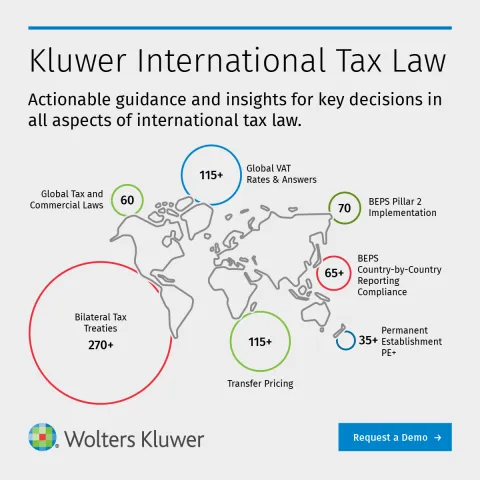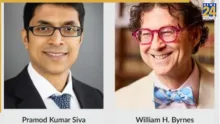The hidden profit distribution: comparative analysis from a Swiss perspective
July 23, 2025
On 6 May 2025, the Swiss Federal Court ruled in the decision 9C_630/2024 on a central issue: the reassessment of a company's tax liability following a tax audit which revealed undue benefits granted to its shareholder. In this decision, the Federal Court reiterated the method for determining whether a taxpayer has granted a pecuniary benefit to its shareholder. This element, often disputed by taxpayers, is primarily assessed based on the “arm’s length principle”, which requires a concrete analysis of whether the transaction in question would have been concluded under the same conditions with an unrelated third party. This case serves as a reminder of the fundamental principles necessary to avoid a tax reassessment, particularly the importance of compliance with the arm’s length principle, which is a key standard when assessing whether a transaction qualifies as a hidden profit distribution, both in Switzerland and in other European jurisdictions.
In case 9C_630/2024, a company (“The Holding”) was subject to a tax reassessment following an investigation that identified three problematic transactions : an invoice for CHF 540,000 originally issued to another company but paid by the Holding without any explanation, thereby constituting an unjustified expense (Contested Transaction no 1); the acquisition of two companies from its sole shareholder for a total of CHF 614,000, although both were insolvent, thereby considered as fictitious asset (Contested Transaction no 2); and the purchase of shares in a company for CHF 6,270,000, mainly financed through the shareholder’s current account without any valid justification (Contested Transaction no 3).
Under Swiss law, a hidden profit distribution occurs when 1) the company provides a benefit without obtaining a corresponding consideration; 2) this benefit is granted to a shareholder or to a person closely related to him ; 3) such benefit would not have been granted under the same conditions to a third party; 4) the disproportion between the benefit and the consideration is obvious, to the extent that the company's corporate bodies ought to have realized the advantage conferred.1
This means examining whether the service provided by the company would have been granted under the same terms to an unrelated third party, in other words whether the transaction complied with the “arm's length principle”.2According to case law, the question is not whether the parties actually recognized the disproportionality, but whether they ought to have recognized it3.
Persons closely related to the shareholder are deemed to be those natural or legal persons with whom he maintains personal or economic ties (e.g., family or friendly relationships), which, in light of all the circumstances, constitute the true reason of the taxable benefit4.
With respect to the burden of proof, the tax authorities must demonstrate that the company has granted a service and that no consideration, or only inadequate consideration, was received in return. If the evidence gathered provides sufficient indications of the existence of such a disproportion, there is a presumption of a hidden profit distribution. It is then up to the taxpayer to establish the accuracy of its opposing claims.5
In the present case, by merely alleging that Contested transaction no 1, constituted advisory fees received in connection with a public takeover bid, and by failing to provide any material evidence, the Holding failed to establish the reality of the expense it claimed to have incurred.
Likewise, with respect to Contested transaction no 2, one of the acquired companies was connected to the son of the Holding’s shareholder, and no loan agreement existed between the Holding or its shareholder and the companies in question. Furthermore, these companies had no remaining commercial value and were entirely insolvent. Under arm’s length conditions, it is clear that an independent third party would not have acquired a receivable with no economic substance.
Finally, similarly, the Holding failed to explain the financing of Contested transaction no 3, merely providing a list of its shareholder’s private debts, the total of which reached CHF 9 million, a figure that did not correspond to the transaction of CHF 6,270,000.
EU similarities
Compared with the domestic law of a few European countries, the outcome reach by the Swiss judges in the aforementioned case would likely be mirrored by the courts of those jurisdictions.
Under Luxembourg law, Article 164(3) of the Income Tax Act defines as a hidden distribution of profits any distribution whereby a partner, shareholder or interested party receives, directly or indirectly, benefits from a company which they would not normally have received if they had not had that position.
According to case law, hidden profit distributions within the meaning of this provision arise when a shareholder or a third party receives, directly or indirectly, benefits from a company which, from the company's perspective, constitute a use of income without effective consideration, and which the shareholder or the recipient could not have obtained in the absence of their relationship with the company. The relevant situation is one in which a prudent and diligent manager would not have granted a similar benefit to an unrelated third party6.
Regarding to the burden of proof, the existence of such a hidden profit distribution lies primarily with the Luxembourg tax authorities, in accordance with the law.7 They are required to conduct an impartial and objective examination of the taxpayer’s declarations and to identify elements that appear questionable and may suggest the existence of hidden profit distributions. In such case, the authorities may challenge the economic substance of the transactions and presume an undue reduction of the company’s profits, without needing to prove it with exactitude. Consequently, the burden of proof is reversed and the taxpayer must demonstrate that there has been no reduction in profit, or that any such reduction is economically justified and not merely the result of special relations.8
Under German law, hidden profit distributions are qualified as reductions in assets (or prevented increases in assets) that are caused or partially caused by the shareholder relationship and are not related to an open profit distribution9. In most decided cases, the Federal tax Court found that a transaction is prompted by the shareholder relationship if a corporation grants a financial benefit to its shareholder or to a person closely related to the shareholder, which it would not have granted to a third party if it had exercised the diligence of a prudent and conscientious managing director10.
Finally, under French law, the tax authorities may, based on Article 111(c) of the French General Tax Code, consider that a hidden profit distributions exists where the transaction is contrary to the interests of the company for an objective perspective.11
Additionally, the transaction must be concealed, particularly when it is not recorded in the accounts or is recorded in an insufficiently precise manner. Lastly, the tax authorities may presume the existence of intent, notably when the beneficiary is the company’s director or when family ties exist.12
In conclusion, this Swiss textbook case and the overmentioned European cases serves as a reminder of the fundamental principle that transactions carried out by a company to shareholder are generally viewed with suspicion by tax authorities. However, such suspicion does not automatically imply the existence of a pecuniary benefit. The tax authorities must always prove that the company granted a benefit without receiving any consideration or received inadequate consideration in return.
In such cases, it is for the taxpayer to prove otherwise, namely, that the benefit received did not disadvantage the company, that the transaction was conducted in accordance with the arm’s length principle, and that there was no obvious disproportion between the benefit and the consideration.
To convince the tax authorities, the taxpayer must provide written and material evidence supporting their position, while keeping in mind that the transaction must objectively appear neutral from an external perspective.
Soubhi Bazerji, MLaw, Junior Associate in Geneva.
Conflict of interest: the author declares that there is no conflict of interest in relation to the case of the article presented.
Use of AI: the author declares that the use of AI, mainly software such as DeepL and/or ChatGPT, was solely for translation purposes.
- 1DFT 144 II 427 recital 6.1; 140 II 88 recital 4.1; 138 II 57 recital 2.2.
- 2DFT 140 II 88 recital 4.1; 138 II 57 recital 2.2; 545 recital 3.2; decision 9C_565/2023 of 12September 2024 of the Federal Tribunal, recital 5.2.
- 3Emily MELLER/Jessica SALOM, Le salaire excessif en droit fiscal suisse, RDAF 2011 II, p. 105, 110 and the references cited therein
- 4Decision A-1368/2021 of 14 March 2022 of the Federal administrative Court, rec. 5.2.2 and the references cited therein.
- 5Decisions 9C_445/2024 of 28March 2025 of the Federal Tribunal, rec. 4.1 and references; 9C_678/2022 of 5 June 2023 of the Federal Tribunal, rec. 7.3 and references.
- 6Judgment of the Administrative Court of the Grand Duchy of Luxembourg No. 27387 - 34419 of 15 July 2015.
- 7Article 59 of Law of 21 June 1999 on procedural rules before administrative authorities.
- 8Judgment of the Administrative Court of the Grand Duchy of Luxembourg No. 27387 - 34419 of 15 July 2015 and the references cited therein mainly Administrative Court, 12 February 2009, No. 24642C, Pas. adm. 2015, v° Tax authorities, No. 402.
- 9Judgement of 22 November 2023 – I R 9/20 of the Federal Tax Court, § 15.
- 10Judgments of 16 March 1967 – I 261/63, BFHE 89, 208, BStBl III 1967, 626; 8 October 2008 – I R 61/07, BFHE 223, 131, BStBl II 2011, 62; 22 December 2010 – I R 47/10, BFH/NV 2011, 1019; 15 February 2012 – I R 19/11, BFHE 236, 452; and decision of 13 July 2021 – I R 16/18, BFHE 274, 36, BStBl II 2022, 119.
- 11Conseil d’État, 8 September 1999, No. 184973, Astruc.
- 12Conseil d’État, 23 July 2010, No. 308021.
You may also like






